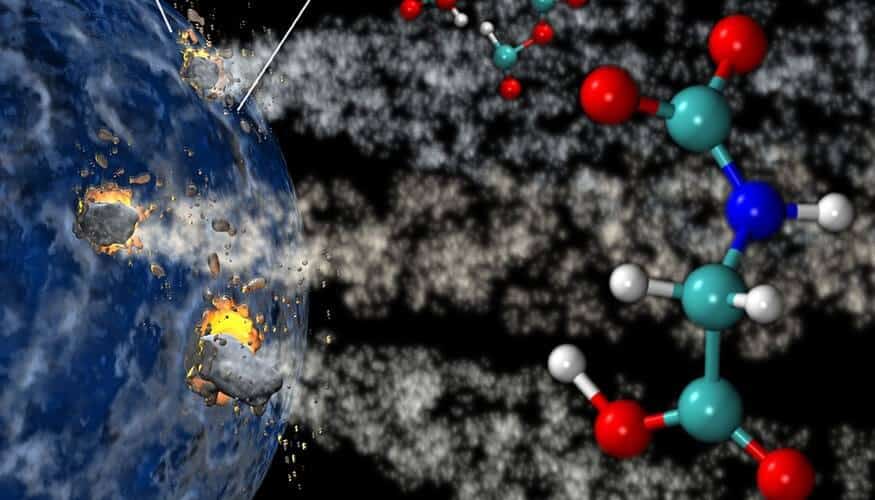A group of international scientists including a Lawrence Livermore National Laboratory researcher have confirmed that life really could have come from out of this world.
The team shock compressed an icy mixture, similar to what is found in comets, which then created a number of amino acids – the building blocks of life. The research appears in advanced online publication Sept. 15 on the Nature Geoscience journal website.
This is the first experimental confirmation of what LLNL scientist Nir Goldman first predicted in 2010 and again in 2013 using computer simulations performed on LLNL’s supercomputers, including Rzcereal and Aztec.
Goldman’s initial research found that the impact of icy comets crashing into Earth billions of years ago could have produced a variety of prebiotic or life-building compounds, including amino acids. Amino acids are critical to life and serve as the building blocks of proteins. His work predicted that the simple molecules found in comets (such as water, ammonia, methanol and carbon dioxide) could have supplied the raw materials, and the impact with early Earth would have yielded an abundant supply of energy to drive this prebiotic chemistry.
In the new work, collaborators from Imperial College in London and University of Kent conducted a series of experiments very similar to Goldman’s previous simulations in which a projectile was fired using a light gas gun into a typical cometary ice mixture. The result: Several different types of amino acids formed.
“These results confirm our earlier predictions of impact synthesis of prebiotic material, where the impact itself can yield life-building compounds,” Goldman said. “Our work provides a realistic additional synthetic production pathway for the components of proteins in our solar system, expanding the inventory of locations where life could potentially originate.”
Comets are known to harbor simple ices and the organic precursors of amino acids. Glycine – the simplest amino acid – was recently confirmed to be present in comet Wild-2.
Goldman’s original work used molecular dynamics simulations to show that shock waves due to planetary impact passing into representative comet mixtures could theoretically drive amino acid synthesis. This synthetic mechanism could yield a wide variety of prebiotic molecules at realistic impact conditions, independent of the external features or pre-existing chemical environment on a planet.
“These results present a significant step forward in our understanding of the origin of the building blocks of life,” Goldman said.
The team found that icy bodies with the same compounds created from comet impacts also may be found in the outer solar system. For example, Enceladus (one of Saturn’s moons) contains a mix of light organics and water ice. The team concluded that it is highly probable that the impact of a comet traveling with a high enough velocity would impart enough energy to promote shock synthesis of more complex organic compounds, including amino acids, from these ices.
“This increases the chances of life originating and being widespread throughout our solar system,” Goldman said.
If our reporting has informed or inspired you, please consider making a donation. Every contribution, no matter the size, empowers us to continue delivering accurate, engaging, and trustworthy science and medical news. Independent journalism requires time, effort, and resources—your support ensures we can keep uncovering the stories that matter most to you.
Join us in making knowledge accessible and impactful. Thank you for standing with us!


The idea that life’s first building blocks are of extra-terrestrial origin had first been postulated (I believe) a long time ago by Fred Hoyle. Think ‘Gaia’.
However this story is about the synthesizing of amino acids as a result of a block of comet ice impacting an early, barren earth, not quite the same as ‘Gaia’
Once we thought other stars might not have planets because the were formed by a chance close encounter between stars.
We have found out that there are shitloads of planets, but we thought perhaps planets like Earth might be rare.
Then when our detectors started to be able to find Earths we thought maybe life was just plain improbable – a one-in-a-heptozootillion shot.
Now we see the precursors of life can be created when comets hit planets.
Now, does anybody wonder if there are comets in these other solar systems that look pretty much like ours? Hint: no.
So where is everybody else?
“And where are the clowns? Quick, send in the clowns.
Don’t bother, they’re here.”